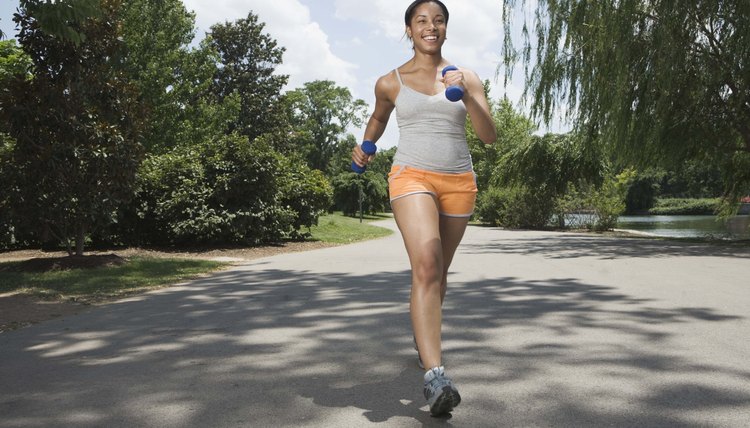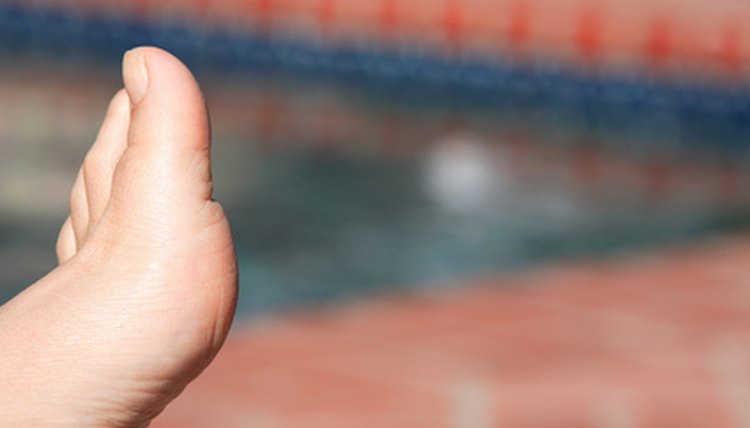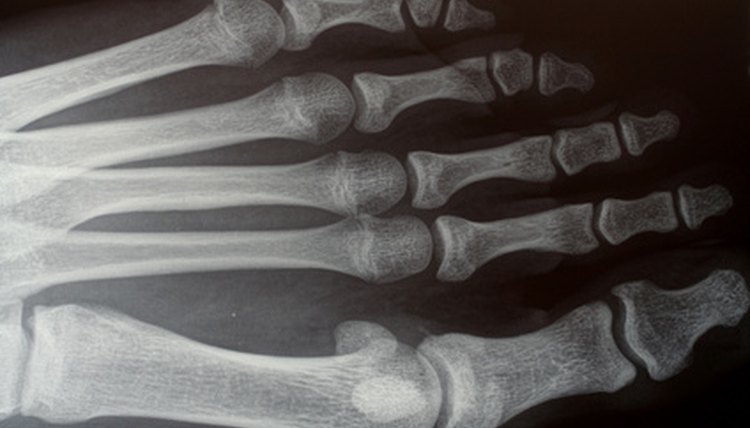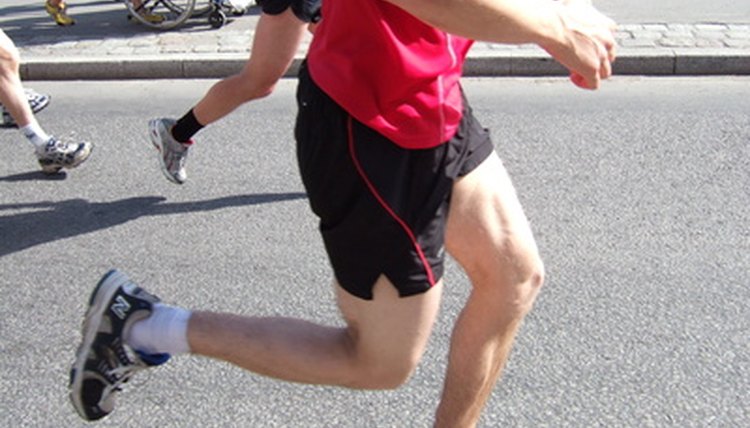Do You Run Faster Flat Footed or on the Balls of the Feet?

If you are interested in improving your running form, one thing you can pay attention to is whether you land on the balls of your feet or toward the middle of the foot. Studies of the fastest runners reveal a tendency for ball-of-the-foot running, with professional sprinters exhibiting this the most. Distance runners and marathon runners sometimes land flatter, on their mid-foot. Generally, landing on the balls of your feet leads to a faster stride.
Forefoot Landing For Speed

Jupiterimages/Stockbyte/Getty Images
When you are training for sprints, you should pay attention to the mechanics involved in your feet hitting and springing off the ground's surface. The amount of time your feet are in contact with the ground determines your stride rate, and the quicker your stride rate, the more speed you generate. The Science of Sport reports several opinions that landing on the balls of your feet creates superior elastic energy return and that the strong springing action of forefoot strike helps your calf store propulsive energy.
Mid-Foot for Endurance

Jupiterimages/Stockbyte/Getty Images
A middle distance runner or marathoner, however, may wish to ease off the toes a little. Landing more flat-footed is better in the long run, literally. The Science of Sport explains that if you kept landing on the balls of your feet while running long distances, you would place huge stresses on the calf and Achilles tendon. Mid-foot strikes are less biomechanically extreme, more sustainable over time. Texas Track's piece on biomechanics explains that the foot's own anatomy increases its stability when landing flatter; whereas the forefoot is mobile and loose, the mid-foot's bone structure makes it much more stable.
Fast Forward Tip

Jupiterimages/Stockbyte/Getty Images
Just as important as how you land is where you land. You should aim to have your foot strike occur directly underneath your body rather than in front. This keeps your center of gravity moving forward. If you reach out too far with your feet, you create a braking action. In fact, the fastest runners are typically already pulling their legs backwards underneath them when their feet hit the ground. This naturally keeps leg turnover high, encouraging speed.
Exercises for Resilient Foot Strikes

Jupiterimages/Stockbyte/Getty Images
Whatever your foot-strike patterns, you need strong feet. Drills and exercises can help. "Real Simple" provides four excellent moves for your feet that can help keep them resilient to injury. Increasing toe and foot strength can be achieved through exercises in which you grab objects such as towels and golf balls with your toes and forefeet and also through rubber band extensions in which you expand your toes against a rubber band looped around them. Along with power, you need balance, and one exercise that comprehensively addresses both is the calf raise, in which you rise onto the balls of your feet.
Personal Technique
Experiment with your own foot strike. Every runner is different, and every runner's training reveals biomechanical quirks that are highly idiosyncratic. There are indeed fast marathoners who land predominantly on the balls of their feet, like sprinters do. But for the majority of distance runners, a mid-foot strike is optimal. You will probably run faster if you land on the balls of your feet, but you might not be able to run longer.
References
Writer Bio
Based in New York City, Fiona Bayly writes about running with a focus on health, nutrition and training strategies for athletes from beginner to professional. She is an avid triathlete, former New England Scholastic Cross Country champion and current member of TeamUSA's age-group championship team in the sport of Aquathlon.
